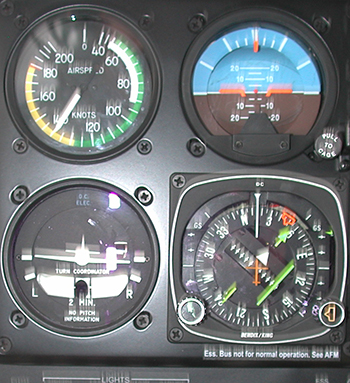Subscriber question:
"Why is maneuvering speed lower for less than gross weight? How do you adjust for lower weight if that's not published in the POH?" —Tim G.
Jeff:
 “Changes in Maneuvering Speed (Va) come down to angle of attack (AOA). The heavier the airplane, the higher an AOA it must have to maintain steady-state flight for a given speed. Steady-state flight with the wings level requires 1G of wing loading. To simplify for the sake of discussion: A heavier airplane needs a higher AOA to net 1G of wing loading at a given speed. This makes certain intuitive sense. A heavier airplane requires more lift to counteract gravity than a lighter one. For a given wing in a given configuration, more lift requires higher airspeed or higher AOA (or both).
“Changes in Maneuvering Speed (Va) come down to angle of attack (AOA). The heavier the airplane, the higher an AOA it must have to maintain steady-state flight for a given speed. Steady-state flight with the wings level requires 1G of wing loading. To simplify for the sake of discussion: A heavier airplane needs a higher AOA to net 1G of wing loading at a given speed. This makes certain intuitive sense. A heavier airplane requires more lift to counteract gravity than a lighter one. For a given wing in a given configuration, more lift requires higher airspeed or higher AOA (or both).
Imagine two identical Cessna 172s are flying along at 105 knots, but one is at 2550 pounds (gross weight) and the other at 1900 pounds. The 2550-pound 172 is flying at a higher AOA. If the pilot of that airplane fully deflects the controls and rapidly increases AOA, the wing will produce more lift—the load will increase over 1G—but the wing will reach critical AOA and stall before it exceeds the load limit. If the pilot of the lighter airplane fully deflects the controls, the AOA and load will increase just the same, but the wing could produce enough lift to exceed the load limit before exceeding critical AOA and stalling. Another way to think about this is that Va is the stall speed for the 172 at 3.8G, the positive load limit for the normal category.
Note that Va is about the pilot applying full control deflection, not turbulence. Va is used for turbulence because a sudden change in AOA due to turbulence is pretty close to a sudden change from an overzealous pilot. But it’s not perfect. Some airplanes publish a Vb, which is turbulence penetration speed. This better accounts for airspeed changes due to gusts and other aerodynamic factors. Most light GA airplanes don’t publish Vb, but it’s generally agreed this is 5-10 knots slower than Va for a given weight. You might want that buffer if you’re in moderate or greater turbulence. Some newer POHs publish Vo (operating maneuvering speed), which you should use for turbulence rather than Va.
The weight adjustment is calculated as the square root of the ratio of your current weight over the gross weight (SQRT (W1/Wg)). Multiply Va at gross weight by that correction and you get Va at the new weight. A good approximation is a 5-percent Va reduction for every 10-percent weight reduction. You can make that even simpler for a specific airplane. The 172S has a gross weight of 2550 pounds. The published Va at 2550 is 102 KCAS (105 KIAS). For every 255-pound reduction in weight (10%), you’d want a 5.1-knot reduction in Va (5%), or about 2 knots for every 100 pounds. The results are all pretty close:
- The published Va for 1900 pounds is 88 KCAS (90 KIAS).
- Va for 1900 pounds using the formula is 88.9 KCAS.
- Va for 1900 pounds using the 10%/5% rule is 86.7 KCAS.
- Va for 1900 pounds using 2 knots per 100 pounds under gross is 89 KCAS.
If you wanted more buffer for turbulence, you’d start with something like 95 KCAS instead of 102 KCAS.
This formula and the approximations work for any speed based on AOA, such as stall speed and the best speed for short final. That latter one is probably the most useful application as it’s one of the best things you can do for consistently better landings, especially in heavier airplanes.”
To see more on how weight affects aircraft performance and speeds, check out this exercise from the Pilot Exercise Program.
Do you adjust your preferred speed for turbulence based on aircraft weight?

